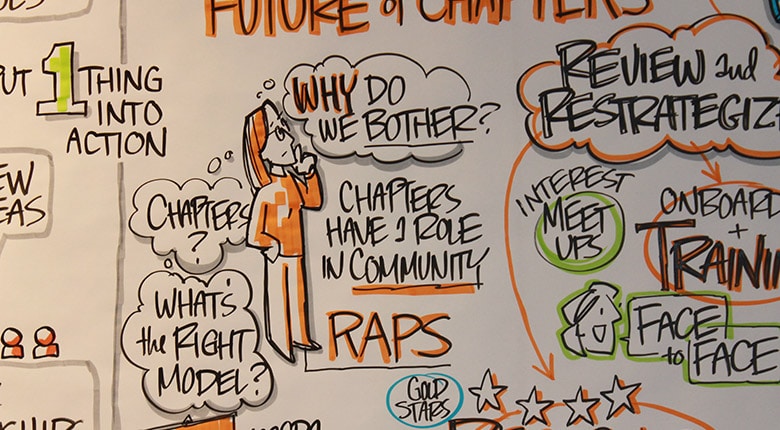Those conversations were the spark that led to:
- A one-page list of recommendations for reviewing and revamping the existing chapter structure.
- Additional board discussions and a growing sense of conviction that change was needed.
- The board making a decision to take action: “The turning point was when the board said, ‘We’ve got to figure this out,’” said Wes.
- The board chair, three long-time chapter chairs, Wes, and another colleague participated in a facilitated workshop where they discussed a new vision for chapters, a new chapter network operating model, ideas for pilot programs, and next steps. They developed an outline of a plan to bring to chapters.
Chapters would have a more strategic role in RAPS’ long-term plan. RAPS would commit to providing new resources for chapters, for example, an online tool kit to help volunteer leaders manage their chapters, an online community for chapter leaders, and an annual chapter leadership summit.

